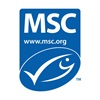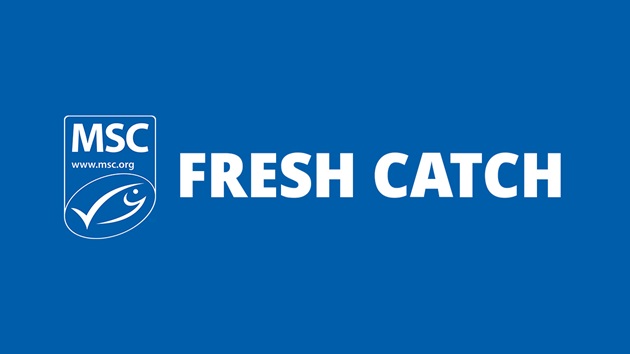The landscape of seafood sustainability is evolving rapidly, driven by market demands, regulatory changes, and increasing consumer awareness.
A recent industry panel hosted by the Fisheries Council of Canada in Ottawa examined current challenges and future trends in seafood sustainability and assurance. Kurtis Hayne, Program Director for the MSC in Canada joined leaders from other certification bodies and sustainability organizations to share insights.
The changing face of sustainability
Depending on who you ask, what sustainability is expected to encompass can extend far beyond traditional environmental concerns. Mike Kraft, Executive Director of the FISH Standard for crew highlighted how labor issues have continued to challenge the industry and are now the main component of some certification programs. Beyond labor practices however, additional considerations mentioned by panelists include living wages, worker and producer equity, gender issues, and animal welfare, to name a few.
Consumer understanding is also evolving rapidly. According to Kurtis Hayne from the MSC, 95% of Canadian seafood consumers are concerned about ocean health, and they're becoming increasingly sophisticated in their understanding of issues like overfishing, illegal fishing, and bycatch. This growing awareness may make it more challenging for seafood companies to communicate about sustainability without providing more detailed evidence of positive impacts.
Market pressures and regulatory challenges
The certification landscape is becoming more complex as regulations around sustainability claims tighten. New legislation like the greenwashing provisions in Bill C-59 in Canada, and the Federal Trade Commission Green Guides in the US are making it harder for companies to make broad sustainability claims without substantial evidence. Many companies may need to review the validity of their marketing materials to ensure compliance with these new regulations.
Jim Cannon, founder of Sustainable Fisheries Partnership, emphasized that on the market side, leading retailers are taking a more sophisticated approach to sustainability. Companies like Walmart and Migros are looking to examine the entire supply chain's impact on ecosystems and are increasingly focused on working with suppliers who are actively engaged in improvement efforts. For example, “Walmart is innovating in 20 plus different commodity supply chains at the moment, using a whole host of different approaches,” he explained.
The challenge of comprehensive certification
One key insight from Christina Burridge of the Association of Sustainable Fisheries was the inherent challenge in trying to make single certification programs cover all aspects of sustainability. As market and consumer expectations expand to include a myriad of issues, she argued that certification programs should maintain focused objectives rather than trying to be all things to all people.
“It is challenging to think how an auditor could cover all of these things because they're much broader than the skill set of the auditors that exist today,” she said. Burridge emphasized that [seafood] standards should concentrate on core aspects like effective management, target species health, and environmental impacts, while specialized programs handle other aspects like labor conditions.
Meanwhile, certification bodies like the MSC face their own evolution challenges. As Hayne explained, “the MSC must balance meeting future market expectations while maintaining accessibility for diverse fisheries - from 25-ton lake fisheries to offshore operations handling tens of thousands of tons.” The latest MSC Fisheries Standard Review drew 600 submissions, reflecting intense stakeholder interest and scrutiny from multiple directions.
The burden of meeting ever-higher standards often falls on harvesters who are already high performers. Mike Craft emphasized the need to set realistic standards that remain attainable while maintaining credibility, rather than continuously raising the bar for those already meeting high standards.
Too many certifications leading to consumer confusion?
Consumer engagement with ecolabels can also vary widely. Some consumers are deeply engaged and want to understand the details behind labels. Others simply want to see that some form of label exists and trust their retailer has done its due diligence. Younger generations in particular are becoming more educated about and interested in understanding what's behind the labels.
To enhance clarity and trust, new regulations like Bill C-59 could lead the market to prioritize credible ecolabels, while some major retailers are seeking to standardize sustainability messaging. By focusing on specific, verifiable claims and providing easy access to detailed information, retailers can empower consumers to make informed choices.
The central role of MSC certification
Despite the emergence of alternative certification programs and ongoing debates about standards, the MSC continues to play a foundational role in seafood sustainability certification. Christina Burridge noted that one of the primary reasons retailers commit to MSC is its robust chain of custody process, which provides reliable assurance that products are indeed what they claim to be.
The program's market impact is clear: Burridge's organization is putting their British Columbia groundfish fishery into MSC assessment specifically because "our customers insist that that happens." This reality continues to propel industry participation in the program, which according to Hayne is a key driver for the more than 150 improvements to fishery practices that have occurred through certification in Canada alone.
MSC's ability to demonstrate concrete improvements also sets it apart. This kind of documented proof of sustainability is increasingly crucial as regulations and market expectations evolve.
Looking to the future
The panel's outlook for the next 20 years suggests several key trends:
- Broader definition of sustainability: The concept will continue to expand beyond environmental concerns to include social responsibility, labor conditions, and climate impact.
- Increased scrutiny: Certification programs face growing pressure for transparency and rigorous standards.
- New financing models: Jim Cannon envisions innovative approaches to funding sustainability improvements, pointing to examples from other industries where supply chain information is being used to reduce capital costs for producers.
- Collaborative management: The future may see more partnership models between industry, civil society, and government in managing fisheries, particularly in regions with limited government resources.
- Standardization across commodities: Some major retailers will continue work to standardize sustainability messaging across different product categories to simplify environmental claims for consumers.
As the industry faces declining seafood consumption and increasing regulatory scrutiny of sustainability claims, the MSC's role as a trusted bridge between consumers and sustainable seafood becomes even more crucial. While new programs may emerge to address specific aspects of sustainability, MSC's established chain of custody system and ability to demonstrate concrete improvements on the water position it as a continuing cornerstone of seafood sustainability and verification.
The path forward requires balancing increasingly demanding market expectations with the practical realities of fishing operations worldwide. Success will depend on finding ways to make sustainability improvements financially viable while ensuring that standards remain both credible and attainable. For industry stakeholders, the key takeaway is clear: sustainability certification is no longer optional, but the way it is implemented and financed may look very different in the coming decades.




